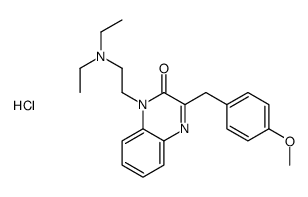Pharmacokinetics of caroverine in the inner ear and its effects on cochlear function after systemic and local administrations in Guinea pigs.
Zhiqiang Chen, Maoli Duan, Howsung Lee, Runsheng Ruan, Mats Ulfendahl
Index: Audiol. Neurootol. 8(1) , 49-56, (2003)
Full Text: HTML
Abstract
Caroverine, an N-methyl-D-aspartate and alpha-amino-3-hydroxy-5-methyl-4-isoxazolepropionic acid receptor antagonist, has been shown to protect the inner ear from excitotoxicity and to be effective in the treatment of cochlear synaptic tinnitus. Local administration of caroverine on the round window membrane (RWM) could be a more effective means of administration to avoid systemic side/adverse effects. The present study investigates the pharmacokinetics of caroverine in the perilymph, cerebrospinal fluid (CSF) and plasma following intravenous and local applications at different dosages. High-performance liquid chromatography was used to determine the drug concentrations. Our results show much higher caroverine concentrations in the perilymph with lower concentrations in CSF and plasma following local applications compared with systemic administration. Auditory brainstem responses were measured to evaluate the changes in auditory function. The effects on hearing were transient and fully reversible 24 h after local caroverine applications. The findings suggest that local application of caroverine on the RWM for the treatment of excitotoxicity-related inner ear diseases, such as tinnitus and noise-induced hearing loss, might be both safe and more efficacious while avoiding high blood and CSF caroverine levels seen with systemic administration.Copyright 2003 S. Karger AG, Basel
Related Compounds
| Structure | Name/CAS No. | Molecular Formula | Articles |
|---|---|---|---|
 |
Caroverine HCl
CAS:55750-05-5 |
C22H28ClN3O2 |
|
Possible contribution of pannexin channel to ATP-induced cur...
2011-06-07 [Brain Res. 1394 , 71-8, (2011)] |
|
[Drug therapy for disturbances of smelling].
2004-02-01 [Laryngorhinootologie. 83(2) , 124-34, (2004)] |
|
[Therapy of olfactory loss].
2003-08-01 [Laryngorhinootologie. 82(8) , 552-4, (2003)] |
|
Caroverine, a multifunctional drug with antioxidant function...
2003-01-01 [Biofactors 19(1-2) , 79-85, (2003)] |
|
Caroverine inhibits the conditioned place aversion induced b...
2003-10-02 [Neurosci. Lett. 349(2) , 91-4, (2003)] |